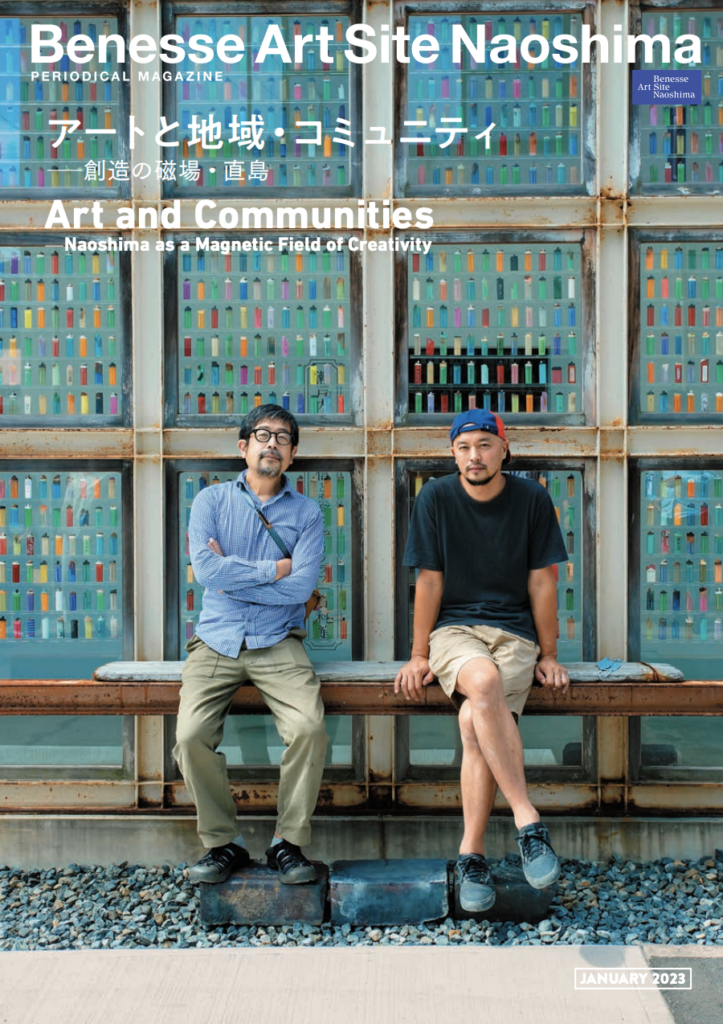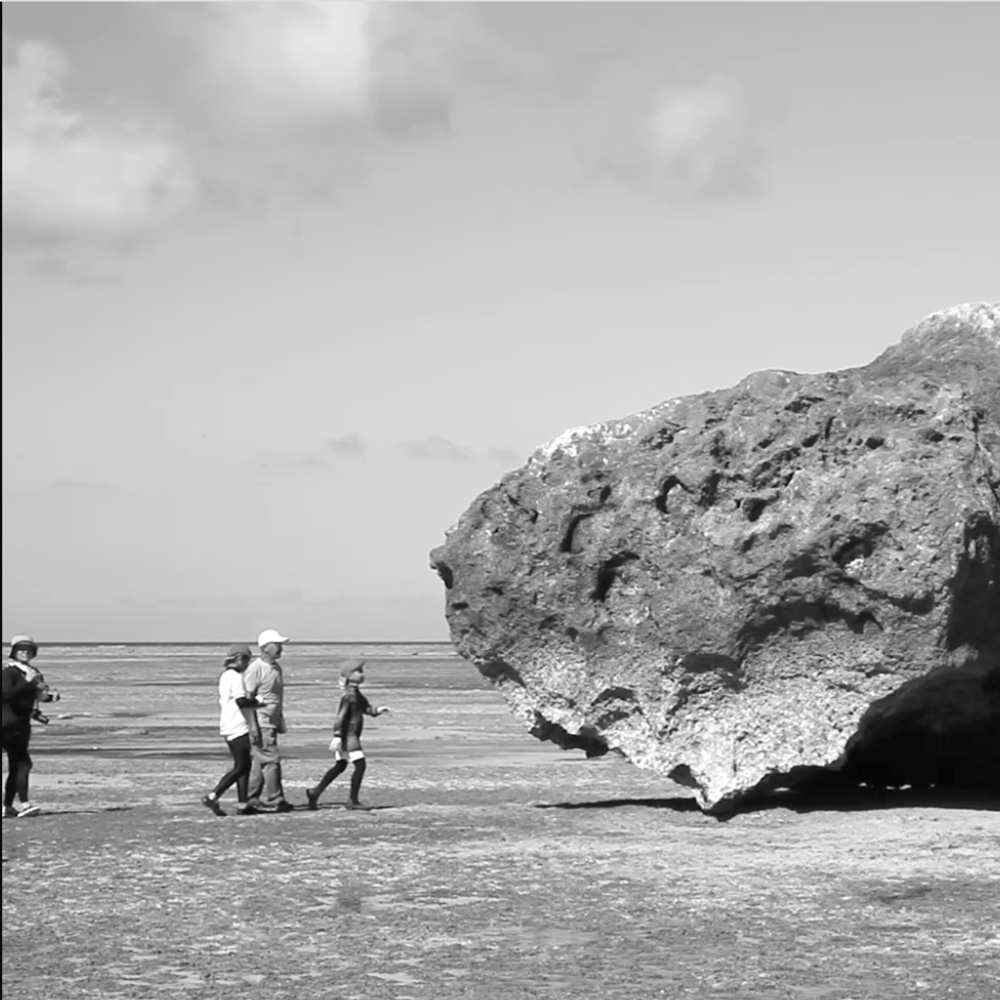Motoyuki Shitamichi Walkthrough – Floating Monuments
Motoyuki Shitamichi Walkthrough – Floating Monuments
[Alison Bradley Projects 2023]
BASN 広報誌 インタビュー

■BASN 広報誌 2023年1月号
[ アートと地域・コミュニティ―創造の磁場・直島]
<もくじ>
ページ02-05 下道基行「直島に移住して」
ページ06-09 小沢剛「瀬戸内を散歩するように」
ページ10-15 小沢剛&下道基行 クロストーク
<PDF>
■BASN 広報誌 2021年1月号
[瀬戸内「 」資料館]
<もくじ>
ページ02-09 瀬戸内「 」資料館
ページ10-15 「資料館館長」として(下道基行)
<PDF>
[C_link: Click our Studio 네번째 이야기] 일본 나오시마
“C_link: Click our Studio” will be released as a part of ACC Art Space Network project.
Artists and curators from 5 countries in Asia and Middle East, Indonesia, Japan, Jordan, Taiwan and Korea participated and produced the online collaborative program.
Fourth released video introduces Naoshima, the island of art, with narration by Japanese artist Shitamichi Motoyuki. He lives on the island and works on the Setouchi “ ” archive project with the residents. Although Naoshima is a small island with only 3,000 residents, it was a famous tourist destination with 730,000 visitors annually. Although tourists have been cut off due to Covid-19, the island is preparing to take off again.
This Video was commissioned and produced as part of 2021 ACC Art Space Network’s program. This video is online tour program to introduce their region and art scene through the perspective of representative artists and curators from each countries. The video will be released every Wednesday in the official YouTube channel of Asia Culture Center for 5 weeks. We hope that you will have time to experience the city, culture and art scene of each country indirectly through the ACC Art Space Network online tour program.
“Spotlight” -Motoyuki Shitamichi- Japan Society NYC
“Spotlight” Motoyuki Shitamichi
Japan Society NYC
Join us for the latest installment of Spotlight, our new online series with artists. We invite you to virtually visit Naoshima island, known as an unparalleled art destination in the Seto Inland Sea of southern Japan. Artist Motoyuki Shitamichi, who is based on the island, will lead a tour at the site of his ongoing project Setouchi “Hundred Years’ Tourism” Museum. The project takes on the format of an open-archive, compiling a survey of ephemera the artist has gathered from local communities, bearing witness to the island’s residents and their collective personal history.
Shitamichi’s practice often begins as years-long research undertakings, and he employs various media such as photography, video, installations comprised of found objects, and workshops. He represented the Japan Pavilion at the Venice Biennial (2019) and received the inaugural Tokyo Contemporary Art Award (2019-2021) as the leading artist in his emerging generation.
This event is part of the Spotlight series, highlighting artists and their practices through featured studio tours, live demos, Q&As, and more, exclusively for Japan Society members. Not a member? Join today to enjoy this studio tour, along with other upcoming Members-only virtual events!
29.10.2020
2019, Tokyo Contemporary Art Award 2019-2021
Shitamichi Motoyuki’s creative activities continue to be grounded in travel and fieldwork. He continues to use editorial techniques to produce work capturing the contemporary everyday, salvaging the accumulated impact of natural and life processes and forgotten historical realities buried in landscapes. His Forms of War, for which he spent four years investigating surviving military aircraft hangers and gun batteries throughout Japan, and his torii, which explores the contemporary state of relics of Japanese colonialism outside of Japan, are especially renowned. In 2019, he was one of a collective of four, a painter, a musician, an architect, and an anthropologist, chosen to represent Japan at the 58th Venice Biennale. From the first day, his work has attracted attention there.
This award supports the winner’s work for two years. In Shitamichi’s case, those two years will probably pass in a flash. Contemplating the site for his stay overseas, he noted the following:
” My work starts in encounters with landscapes, history and local people. After three to five years of exploration and shooting, little by little, the project finally takes shape. For that reason, a long period of support is very helpful. The encounters are always random. Sometimes something interesting happens along the way. In it I discover the seed for a totally different work. To be ready to catch whatever leaps out at me, I want, as much as possible, to leave openings and not be tied down to a fixed formula for work. Of course, I cannot just shoot randomly without being in my intended location. That is why I like to establish a base, a starting point from which to move.”
When Shitamichi was a child, he was fascinated by shell mounds. The phenomenon and the landscapes in which they occurred created a connection between the time and place in which he was living and human lives and natural phenomena thousands of years earlier. In art school, he majored in oil painting, but already his starting point was awareness of a desire to see and unearth something in the world around him. He began to experiment with forms of expression combining photography, video, found objects, interviews and events.
From his early period until 2011, the year of the Great East Japan Earthquake, Shitamichi felt indelible doubts about the “history” and “modernity” inculcated in him by his education. He confronted history and landscape through observation, research, and creation (travel, reading, and editing). Following his experience of volunteer work and symposiums in the region affected by the disaster, he began to experiment with exploring the relationship between humanity and nature from a longer term perspective.
In recent years he has traveled frequently to Okinawa to photograph the giant “Tsunami Boulders” left on the coast by earlier tsunamis. Some of these immense rocks left on land by the Meiwa Tsunami in 1771 and other tsunamis during the preceding six centuries have become objects of worship. Others are now covered with forests. He was moved to begin this work by the debate over whether to preserve a fishing boat washed ashore in one of the towns struck by the 2011 earthquake and tsunami, a debate that ended with the boat’s removal in 2013. He says,
” As I see it, it is important to consider the shape in which the land is left. Just as I was worrying about how people would react a century from now if that boat were left where it was, I heard about these boulders washed ashore in Okinawa in a tsunami two hundred fifty years ago and how they affect life and nature even now. I became very interested in them.”
The historical facts of natural disaster and the evidence that sustains later generations’ memory of it hollow out over time, then take on new symbolic meaning and value. In this respect, we can see a consistent thread connecting Shitamichi’s recent work with the early period series on relics of war and torii. He notes,
” When someone from a certain era assigns value, it is only a container. To what extent does it weaken the actual value. There we may find a powerful fascination, memories of emotion and doubt, sometimes negative feelings. I was always interested in history but not in the narratives that others wrote about it. I wanted to follow my own direction in learning about it.”
Shitamichi’s theme is the spatial and temporal dimensions of everyday landscapes and how value is assigned to them, together with the fluid relationships between history and humanity, nature and humanity, found at their intersections. In his work we find a combination of lyrical subjective expression with an objective, dry, ethnological approach, a distinctive stance toward his subjects rooted in careful observation and research. This award will give him the time to excavate new ground and grow the seeds of creativity he discovers, allowing his work to ferment and mature.
interview, text: SUMIYOSHI Chie
旅やフィールドワークをベースに制作活動を続ける下道基行。風景のなかに埋没して忘却されかけた歴史的事実や、自然や生活の累積をすくいあげ、編集的手法で現代の日常と接続させる作品を発表してきた。なかでも、日本各地に残る戦闘機の格納庫や砲台などの戦争遺構を4年間かけて調査・撮影した『戦争のかたち』、日本の植民地時代の遺構として国外の土地に残る鳥居の現状を調査する『torii』などのシリーズは特に高く評価されている。2019年には、第58回ヴェネツィア・ビエンナーレの日本館展示に、美術家・音楽家・建築家・人類学者による4人のコレクティブの1人として参加し、開幕当初より注目を集めている。
本アワードでは今後2年間にわたり受賞作家の活動支援を行うが、下道にとって2年という時間はあっという間に使い切るものになるかもしれない。「僕の作品は、風景や歴史、土地の人との出会いがあって始まります。3年、5年かけて少しずつ調べたり撮影したりしながら徐々に形になっていくので、支援期間が長いことはすごく助かります。出会いは常に偶然で、制作の場所へ行く途中で面白い体験をしたり、まったく別の作品の種が埋もれていることもある。飛び込んでくるものをキャッチできる状態にしておくために、できるだけ自分の制作形式を固めずに余白の部分を空けておきたい。もちろん目的地がなければ、その場所を偶然通りかかることもないので、活動拠点にポイントを打ちながら、そこから移動もするだろうという気がしています」と期間中の海外での活動場所について彼は思いをめぐらす。
子供の頃、貝塚に興味を持ったことをきっかけに、何千年も前の人々の生活や自然の累積が目の前に存在する風景や現象に、自身が生きる時間や空間の感覚を大きく超えた繋がりを感じるようになったという。美術大学では油絵を専攻したが、すでにそこにある世界から何かを見つけたい・発掘したいという感覚を起点に、フィールドワークをもとにした写真や映像、ファウンド・オブジェクト、インタビュー、イベントなど複合的な表現方法に着手するようになる。
初期から2011年の東日本大震災以前まで、下道は教育によって自身に刷り込まれた“歴史”や“近代”を疑い、観察と研究と制作(旅と読書と編集)を通して、歴史と風景に向き合ってきた。その後、被災地でのボランティアやシンポジウムなどの経験などを通じて、さらに長い時間感覚のなかで、人間と自然との関係を捉え直そうと試みるようになった。
近年は沖縄に何度となく通い、過去の津波により浜辺や陸地に乗り上げた巨大な岩「津波石」を撮影し続けている。1771年に起こった明和の大津波や約600年で起こり続けている津波によって、陸地に上った岩には、民間信仰の対象になっていたり、樹が生えて森になっているものがあるという。本作の発端となったのが、震災後の被災地で、津波で打上げられ集落のなかに残された一隻の船が、それを保存するかどうかの内外の識者による議論の末、結局2013年に解体されたという出来事だ。
「僕はその土地にどう残すか、ということに重要性があると考えていたんです。その船が100年後に残っていたとしたら、人々はどんなふうに出会うのかと考えて悶々としていたときに、ちょうど沖縄で250年くらい前の津波で乗り上げた岩が、現在も生活や自然に関わりをもっているということを知って興味を持ちました」
ある自然災害の歴史的事実とその記憶を後世に受け継ぐ証が、やがて形骸化し、さらにその先に、新たな象徴的な意味や価値を帯びている状態がある。そこに向けられた下道の眼差しには、初期の戦争遺構や鳥居のシリーズから現在まで、彼の制作態度に一貫して通底する視点がある。「ある時代に誰かが価値を定めたものが単なる入れ物でしかなく、どれほどもろく価値を替えるのか。そこに強く惹き付けられて、感動や疑問をおぼえ、ときには負の感情を持つこともあります。もともと歴史を調べることが好きだったけれど、誰かが書いた物語ではなく、自分自身の方向で知っていこうという気持ちがあってここまでやってきました」と語る。
下道の作品のテーマは、日常の風景にひそむ時空間や価値の境界のあり方であり、その境界を挟んで交わされる歴史と人間、自然と人間の流動的な関係性にある。丹念な観察と調査を経て、作品の題材をあつかう独自のスタンスには、主観的で詩性あふれる表現言語と客観的でドライな民俗学的アプローチが同時に存在する。本アワードは、新しい土地で発掘する創造の種を時間をかけて育み、作品世界を醸成させる一助となるはずだ。
インタビュー・テキスト:住吉 智恵
2013, Mori Art Museum
『戦争のかたち』『Re-Fort Project』について/「六本木クロッシング2013」森美術館より
talking about [Remnants][Re-Fort Project]/“Roppongi Crossing 2013: OUT OF DOUBT”, Mori Art Museum,
2012, Museum of Contemporary Art Tokyo
『torii』について/「MOTアニュアル」東京都現代美術館より
talking about [torii]/ “MOT Annual 2012 Mking Situetions, Editing Landscapes”, Museum of Contemporary Art Tokyo
